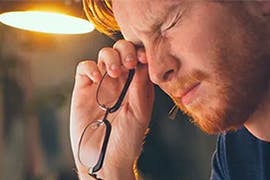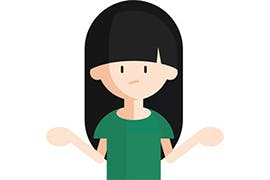Body Pain: Causes, Prevention, and Treatment
Pain is an unpleasant sensation in the body that is triggered by the nervous system. The onset of body pain can occur suddenly or slowly, depending on many factors, (e.g. environmental, biological, emotional, cognitive, etc.) Each individual is the best judge of the severity and frequency of his or her body pain.
Types of Body Pain & Causes of Body Pain
There are generally two types of body pain: acute pain and chronic pain.
Acute body pain
Acute body pain results from an illness or event, such as injury or surgery. It generally occurs suddenly, then gradually diminishes or stops on its own or with medical treatment. Acute pain can range from mild to severe, and may last for weeks or months. If treated properly, acute body pain will subside within six months. If left untreated, acute pain may lead to chronic pain.
Chronic body pain
Chronic body pain is pain that persists over time and may have no apparent cause, even after an injury has healed or an illness has subsided. Chronic pain can persist for weeks or even years. Sufferers of chronic pain may find it debilitating, resulting in loss of sleep and inability to function normally.
Important: If you or someone you know suffers from acute or chronic body pain, make sure to see a medical professional for diagnosis and treatment options. Medication should be used as directed.
How common is back pain?
According to the Centers for Disease Control and Prevention, back pain is second only to headache as the most common medical complaint in the United States, and is the second leading cause of missed workdays. Each year, 80% of adults below age 50 experience back pain at least once, and the majority will have multiple occurrences. Back injury is the number one occupational hazard in the U.S.
Back or body pain can have any of a number of causes
In addition to causing acute pain, some of these things can also cause more serious back injuries that require medical attention. Causes include ligament or muscle strains or sprains, muscle spasms, or arthritic or swollen joints.
Things that can cause strains, sprains, or spasms include:
Poor posture
Poor physical condition
Using muscles, ligaments, or joints for activities for which they're not conditioned or of which they're not capable
Excessive or improper lifting
Sudden awkward movements, like lifting or twisting too quickly
Overly strenuous physical activities
Degeneration of the spine, which often occurs with aging, can contribute to lower back pain, and may often lead to more serious conditions such as spondylosis (arthritis of the spine) or spinal stenosis (narrowing of the space around the spinal cord and nerve roots due to arthritis and bone overgrowth). If you think you may be suffering from more severe back pain, talk to your doctor.
Preventing back and body pain — you can find pain relief
Back and body pain may be reduced or prevented by eating a proper diet, managing weight, and increasing muscle flexibility and strength through exercise and physical conditioning. Even low-impact physical activities, such as walking or swimming, may help prevent body pain by increasing strength, flexibility, and endurance.
Some tips to promote back and body health and help prevent body pain:
Maintain good posture when sitting and standing
Use your legs to lift heavy objects
Carry heavy objects close to your body, and turn with your legs and not your waist to change direction
Maintain a healthy body weight. Excess weight can tax the body's muscles, especially the back muscles
Sleep on your side with bent knees. Consult your doctor about how firm your mattress should be
Acute back or body pain usually stops on its own or with body pain treatment.
Treating back and body pain — some suggestions:
Get plenty of rest, but don't stop moving. Especially with back pain, prolonged bed rest can actually make the condition worse. Generally, light activity can help treat body pain.
Cold/heat treatment — apply ice or a cold compress to the affected area for 15-20 minutes several times a day until spasms and acute body pain subsides. Then apply warm, moist heat (such as hot compresses or warm baths) to loosen tight muscles
Pain relievers — over-the-counter pain relievers such as acetaminophen or aspirin can be effective body pain treatments for individuals with back and body pain.








